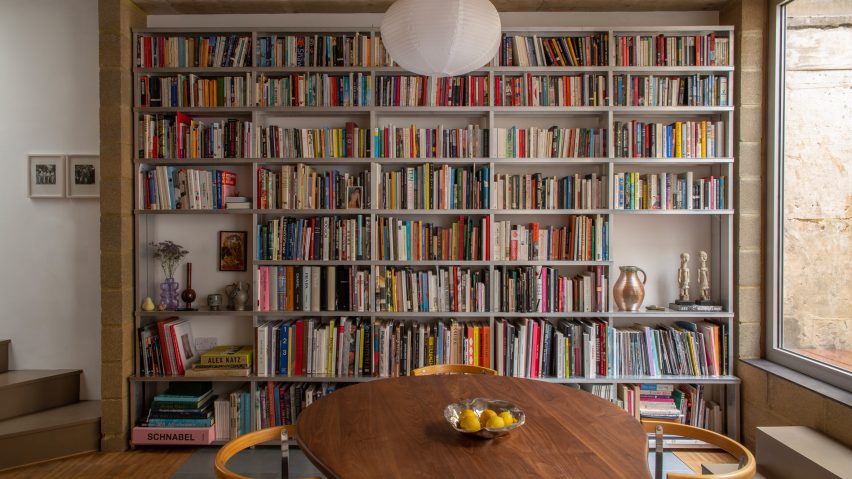
James Shaw's light-filled London home is almost entirely underground
Lumpy recycled plastic furniture and circular skylights characterise this sunken London house, which designer James Shaw concealed on a 60-square-metre plot for himself and his family.
Located in a conservation area in east London, the two-storey dwelling was constructed by Shaw and his friend, architect Nicholas Ashby.
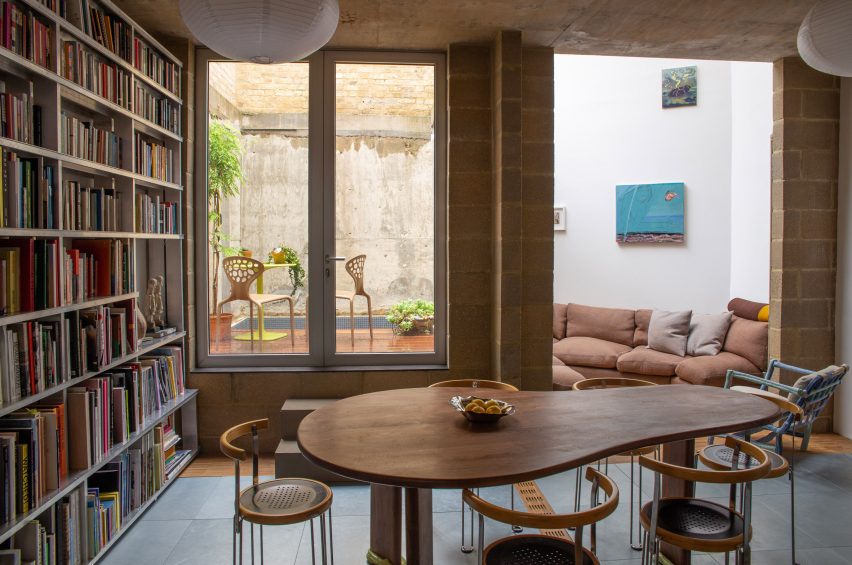
The neighbourhood's planning restrictions required the pair to build all but 2.7 metres of the building out of sight from the street level, resulting in a sunken home with a large basement invisible from the outside.
An open-plan kitchen, living and dining area feature in this underground space, which has exposed concrete walls interrupted by large, floor-to-ceiling glass doors that open onto a small terrace with a dinky plunge pool.
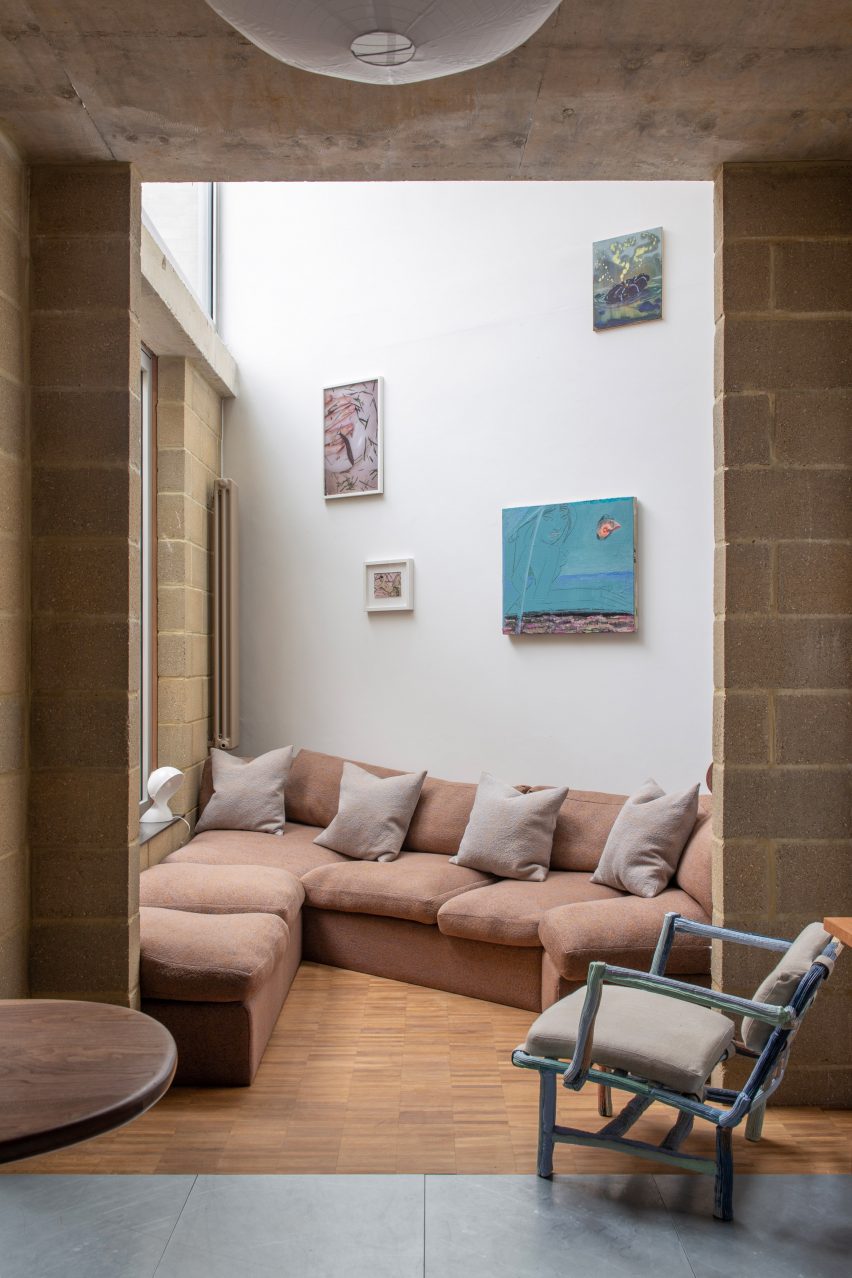
Shaw and his writer-curator wife Lou Stoppard chose eclectic interiors for the home they share with their baby daughter – a collaboration that began with the duo's 2022 London Design Festival installation of clashing furniture, created to poke fun at the tensions that arise when couples move in together for the first time.
Made by Shaw, the pear-shaped walnut table from the installation features in the living area, surrounded by spindly stacking chairs first designed by furniture brand Blå Station founder Börge Lindau in 1986.
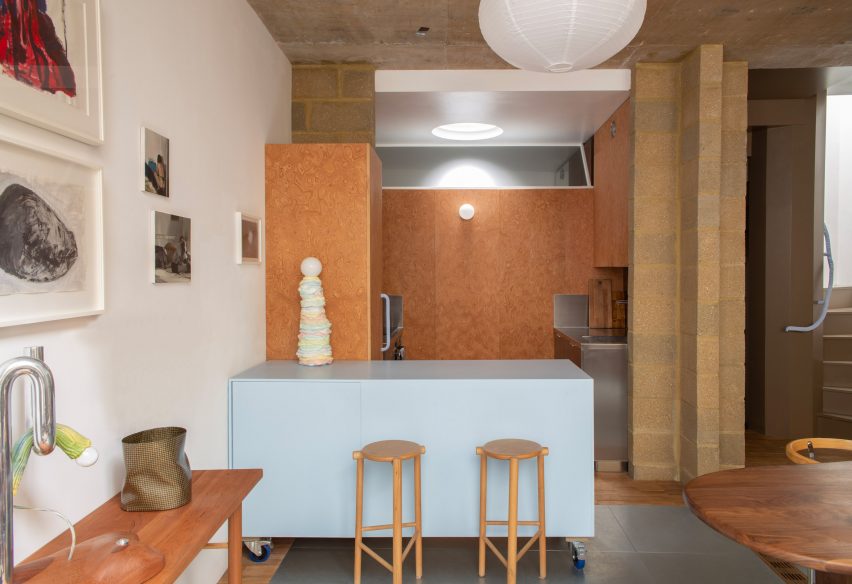
A custom aluminium bookshelf stretches across the wall opposite the table, built by Shaw to fit the unusual space. The designer also squeezed a bespoke burnt orange sofa into one of the irregular corners, illuminated by a large circular skylight.
Known for his Plastic Baroque furniture made from recycled and extruded HDPE, Shaw placed a lumpy two-tone blue lounge chair next to the sofa – another piece that featured in his previous installation.
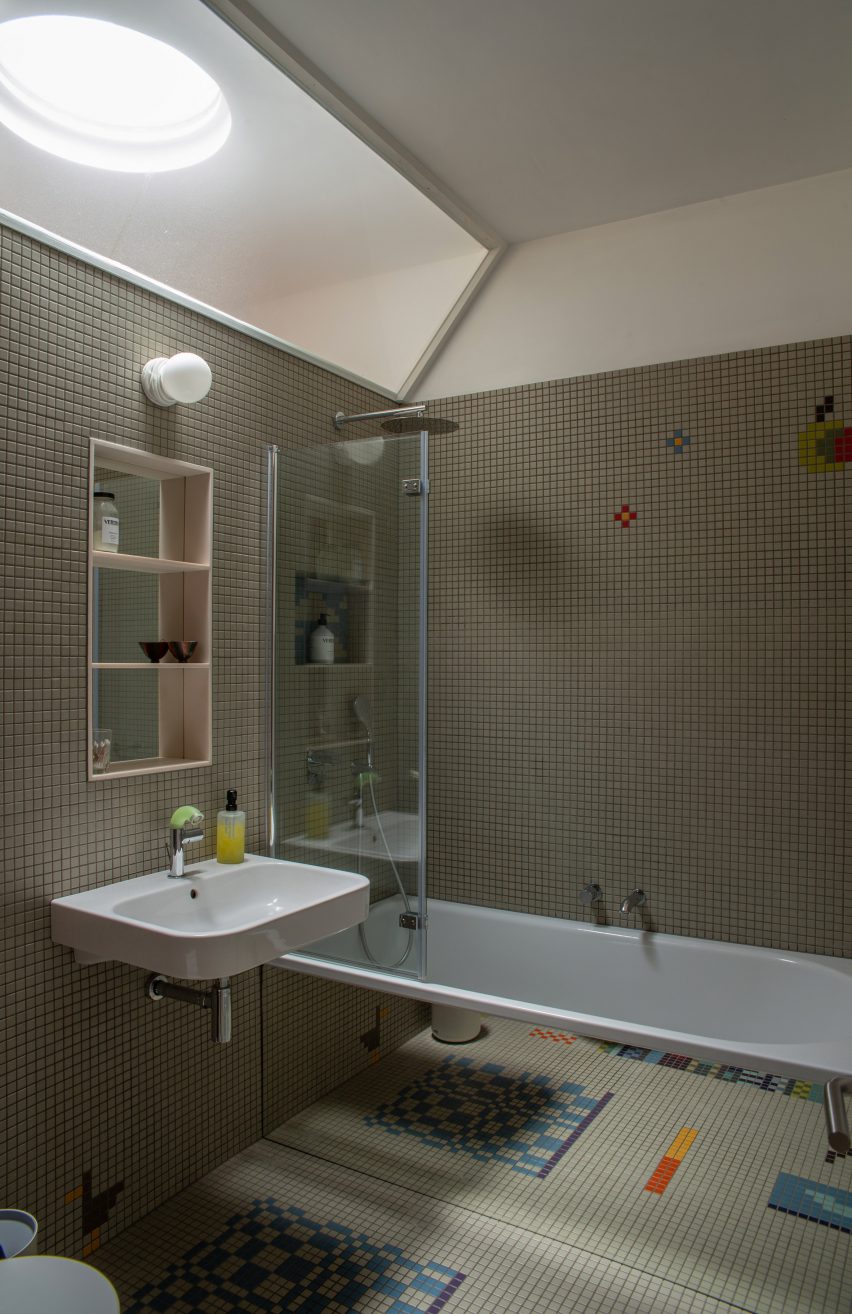
Opposite the living and dining area, the rectilinear kitchen cabinets were finished in veneered MDF, while the fridge was also fitted with a knobbly plastic handle.
Stainless steel and pale blue HIMACS make up the worktops – one of which is on wheels to allow for flexibility when hosting.

Across the basement, a combination of oak finger parquet and raised-access metal tiles were used to create contrasting flooring. The silver-hued tiles can be lifted to reveal extra storage.
Also underground, the bathroom was designed with a playfully patterned mosaic floor informed by the work of Bauhaus artist Anni Albers, including an abstract illustration of the couple's cat, Rupert.
The mirrored bathtub reflects and enhances the intricate flooring, while another rounded skylight adds natural light to the space.
An extruded blue plastic bannister snakes up the staircase to the bedroom – the only street-level room in the house.
The Shaw-designed oak and brass bed features bedposts topped with squiggly pear-shaped sculptures, while the thin timber wardrobe was hand-painted with decorative panels by artist Marie Jacotey, who completed the project on-site.
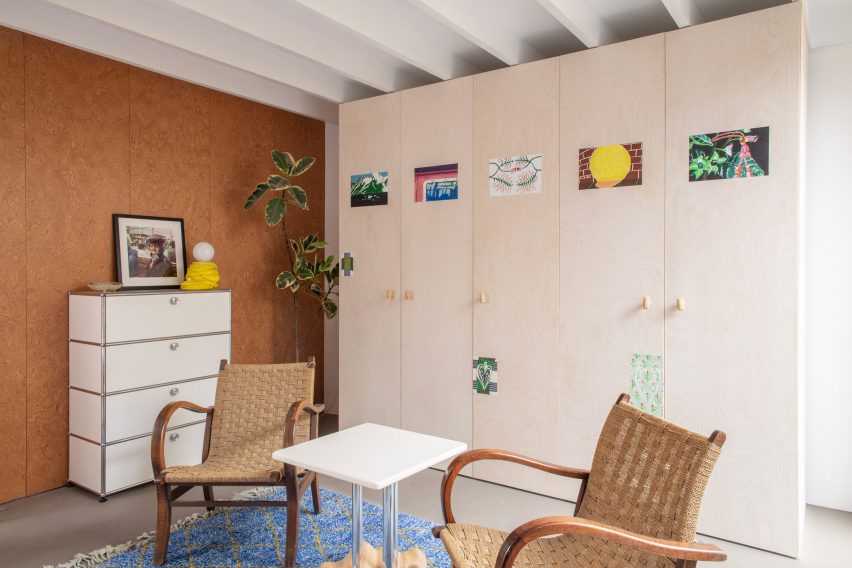
Stoppard's vast art collection features throughout the sunken home, including delicate paintings by emerging artists Lydia Blakely and Mary Stephenson and antique artefacts from various travels.
Elsewhere in London, Shaw's trademark plastic furniture has also been used for retail projects. Footwear brand Camper's Regent Street store includes bumpy yellow shelving by the designer, and a Traid charity clothes shop in Shepherd's Bush has a wiggly bench upholstered in unsold clothes salvaged from the Traid warehouse.
The photography is courtesy of James Shaw and Lou Stoppard.